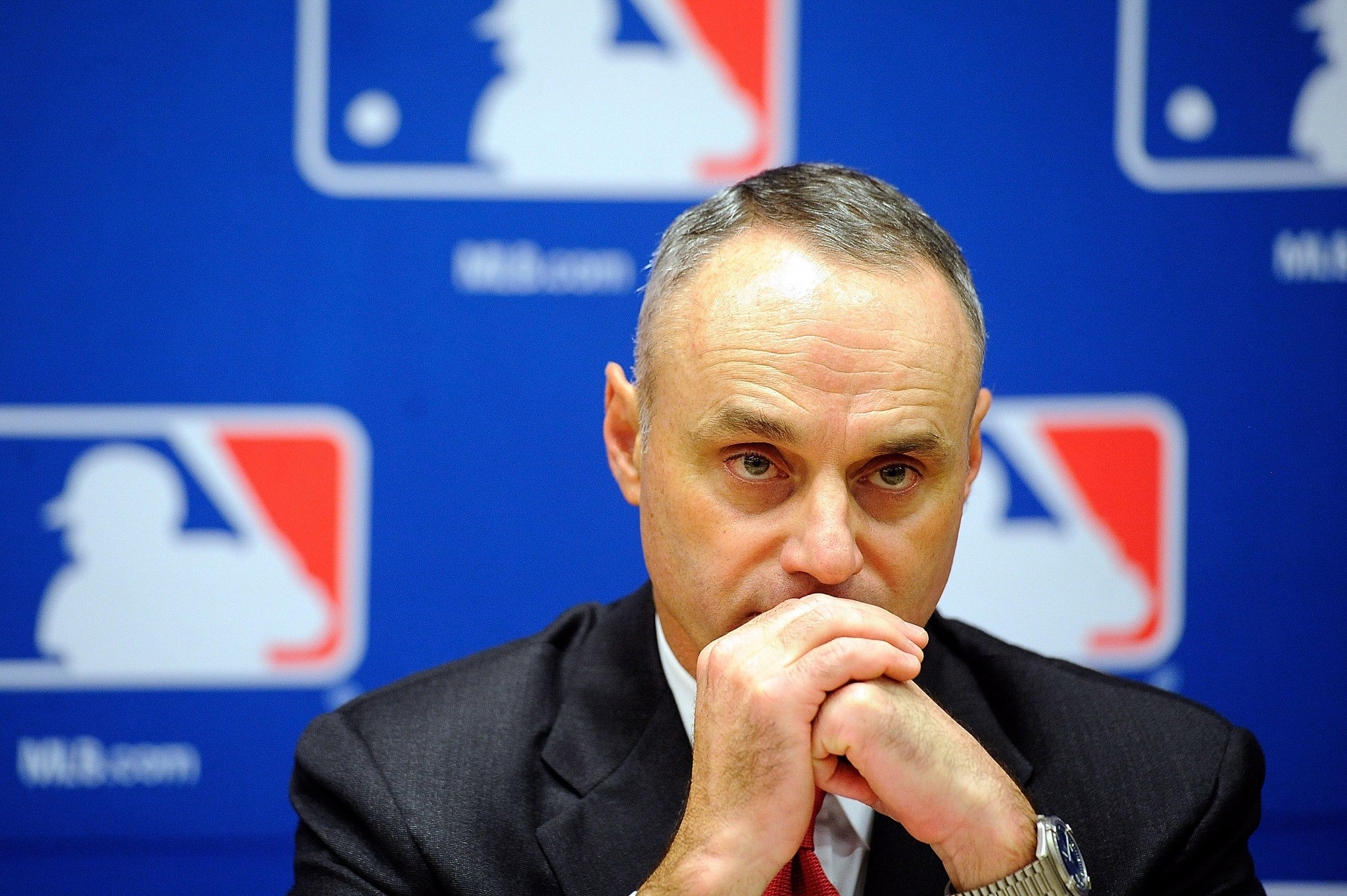Does Major League Baseball have a death wish?

Credit: MLB

Major League Baseball’s Collective Bargaining Agreement will come to an end on December 1– unless the two sides can find a middle ground. Both are flirting with disaster.
True, players and owners have taken a hit thanks to the pandemic, especially during the truncated season last year. Owners put their losses at $3 billion, players at more than 60 percent of earnings. But the plight of millionaires and billionaires hardly resonates with fans who have lost their jobs, their homes, even their loved ones.
The two entities have been negotiating for months with no sign of progress, threatening the market for free agents and possibly delaying spring training. The five-year contract expires December 1, as does the luxury tax system. The shrinking of attendance undoubtedly colors the negotiations. Fannies in seats reached a peak in 2007 at 79 million and had decreased to 68.5 million by 2019.
Tony Clark, a former player and an All-Star in 2001, has represented the Major League Players Association (MLBPA) since 2013. He became the first former player to head the union, succeeding Michael Weiner, who served from 2009 to 2013 when he succumbed to a brain tumor at the age of 51.
The union’s relations with the league have soured in part due to the pandemic, and the rhetoric has sharpened. One of the main concerns of the MLPA is ensuring that each club actually fields its’ best players and tries to win.
Padre fans most certainly questioned the team’s goals earlier in general manager A.J. Preller’s tenure, and many accused the organization of tanking as a way to improve placement for the draft. “The Atlantic” explored that topic in August 2018 in an article entitled “The San Diego Padres Found a Way to Monetize Bad Baseball” by Jeremy Venook.
Rob Manfred, a former labor lawyer who succeeded Bud Selig as commissioner in January 2015, has also addressed the issue, in part thanks to the outcry from fans. Selig’s tenure has been besmirched by his failure to react to the growing use of steroids until it became out of control. He also helped to oust Fay Vincent. However, no one can doubt Selig’s love of the game.
A minority owner of Milwaukee Brewers from 1998 to 2015, Selig became close friends with Henry Aaron and spoke out about the virulent racism “Hammerin’ Hank faced. After 22 years, he turned the reins over to Manfred in January 2015. Manfred had been working with MLB since 1987, so he has not escaped the steroid taint completely.
While Selig exuded enthusiasm for the game, Manfred has focused more on the dollars involved. He’s also tried to make basic changes in the way the game has been played for decades in an attempt to speed up the pace of play. For example, he’s instituted pace-of-play mandates that include putting a man on second in extra innings and restricting the shift, as well as mandating that starting or relief pitchers must face a minimum of three batters unless they end an inning. He has also explored the idea of expanding the number of teams.
Every commissioner faced serious issues beginning with Kenesaw Mountain Landis, who served from 1920 to 1944. He had a reputation as an autocratic racist and is remembered for banning “Shoeless” Joe Jackson and his Chicago White Sox teammates after they were accused of throwing the 1919 World Series. However, the amount of money involved, the decline in overall attendance, and the global pandemic have increased the degree of difficulty for both sides.
Critics of Manfred have complained that changes to speed up the game were developed without consulting fans or players and that the league has ignored the glaring ineptitude of umpires like CB Bucknor, Joe West, Angel Hernandez. and Laz Diaz. Manfred has also received heat for his handling of the Houston Astros’ sign-stealing scandal during their 2017 World Series run. MLB targeted the manager AJ Hinch and general manager Jeff Luhnow who were both fired. However, cheating players didn’t even receive a hand slap. Also, calling the World Series Trophy “a piece of metal” didn’t delight anyone.
[wpedon id=”49075″ align=”center”]
The current stalemate between the players and owners increasingly resembles the stalemate in 1989-1990. The agreement expired on December 31, 1989, and by January 9, the owners threatened a lockout.
At that time, the top-earning players took home $3 million a year, a minuscule amount compared to the super-sized contracts these days. Commissioner Fay Vincent worked tirelessly until the two sides grudgingly accepted a basic agreement on March 19, 1990. The minimum salary rose from $68,000 to $100.00 per year. At that time, the average household took in $50,200, with wide disparities among states and Mississippi reporting a low of $33.631.
By 2021, the players’ minimum increased to $570,500. The top players take home far more, including the Padres’ Manny Machado at $30 million a year. However, the largess has not trickled down to minor leaguers. In the face of criticism, MLB increased the minimums for minor leaguers by a pittance from $400 up to $700.
According to reports, Manfred and Clark have met frequently but without success so far. Without an agreement, players like Corey Seager, Max Scherzer, Freddie Freeman, Kris Bryant, Carlos Correa, Kevin Gausman, and Anthony Rizzo will remain in limbo. As the clock ticks and the rhetoric heat up, we have to wonder if the sport has a death wish.
Baseball has been a part of Diane’s life since her father played professionally (mostly at the minor league level). She has written for a number of publications and concentrated on companion animal welfare. She welcomes the opportunity to write about the sport she loves. Diane shares her home with her husband and a house full of rescued animals.